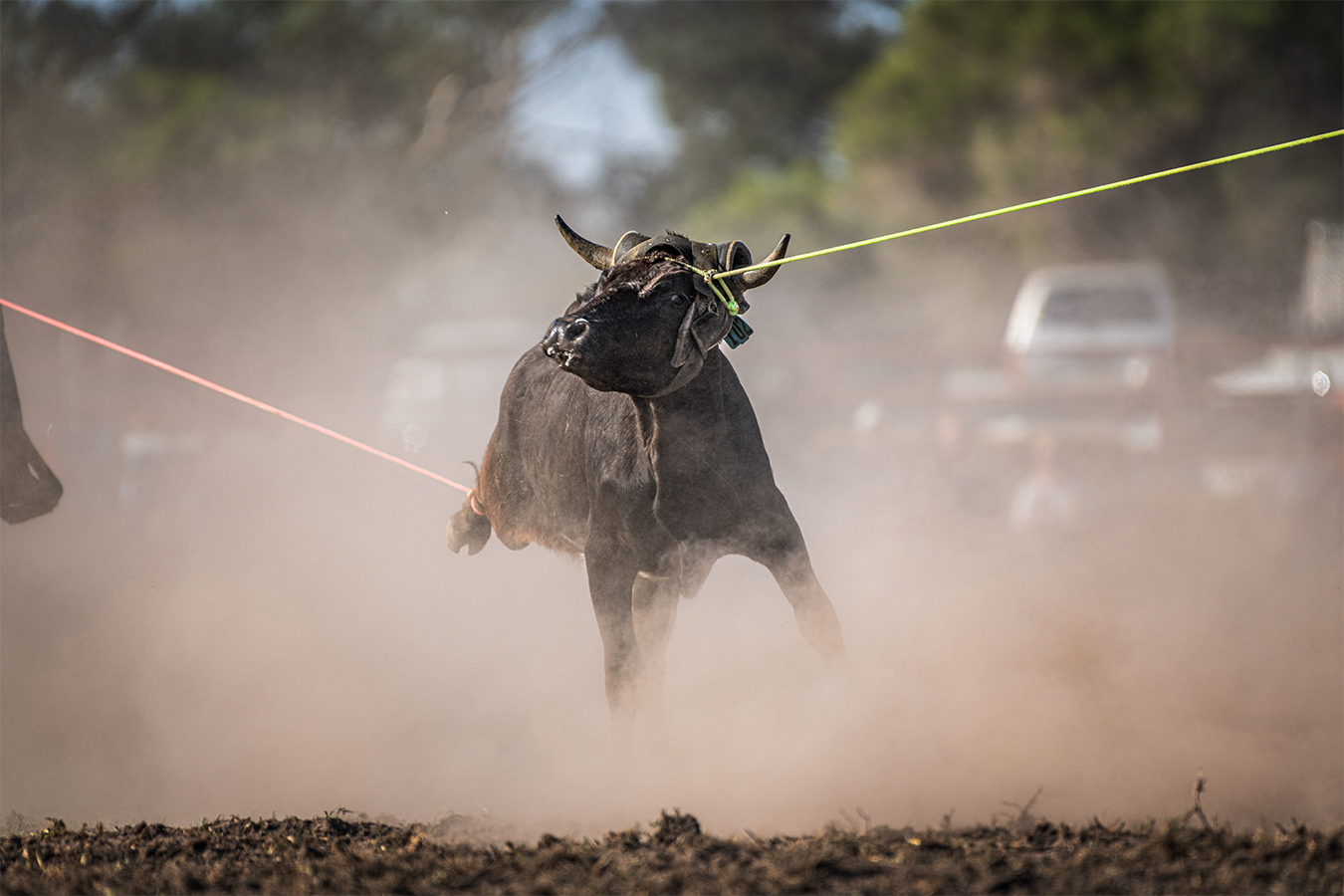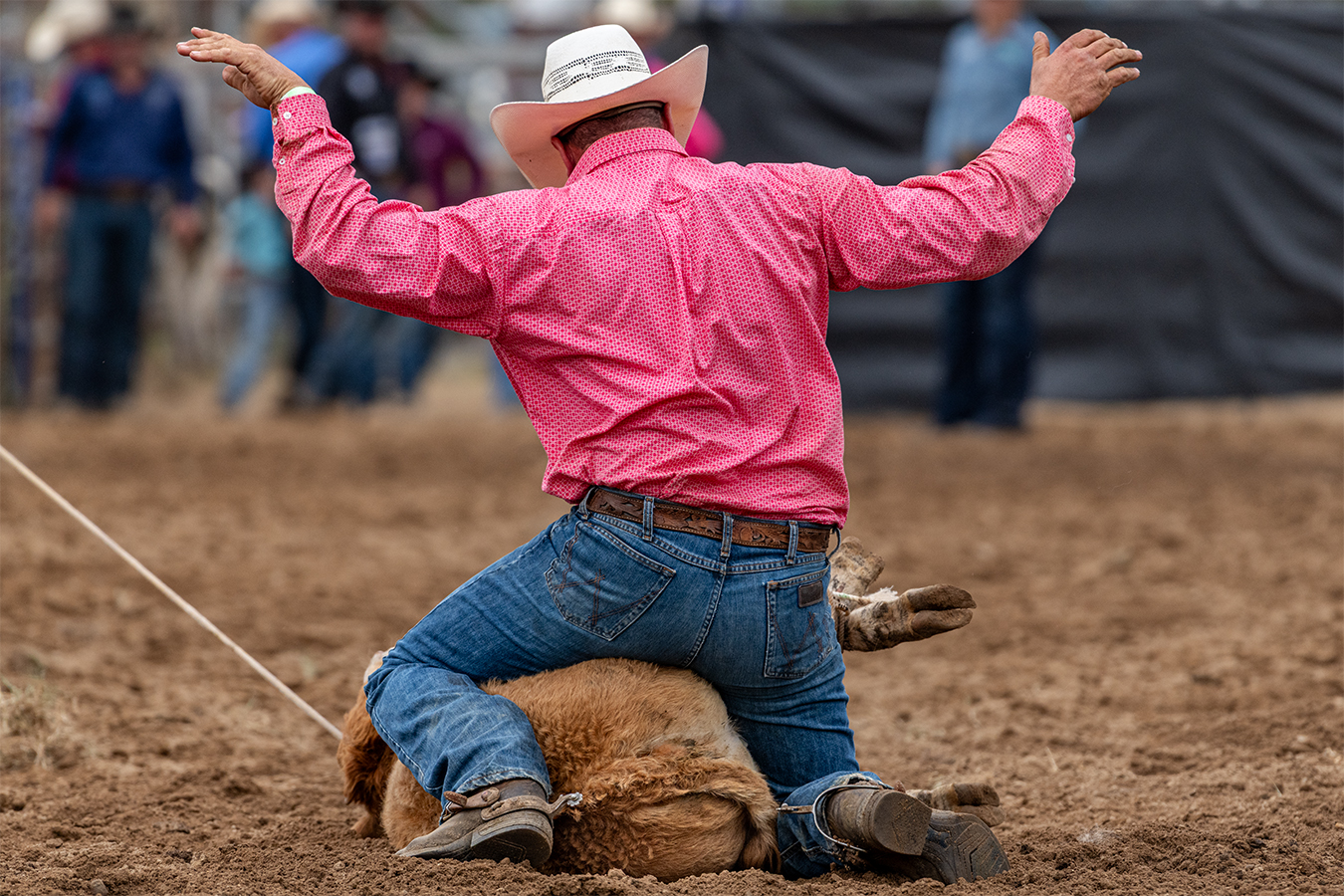In an era where tradition and masculinity are often seen as under threat, rodeos remain a stronghold of rural identity—bringing communities together to celebrate the grit, skill, and spectacle of stockmanship. For many, these events are a source of pride and adrenaline. But at the heart of the performance are animals whose experience is far removed from that of their human counterparts.
Cattle and horses used in rodeos more than often display clear signs of emotional distress. Injuries are common; in more severe cases, animals die or are euthanized on the spot. Marketed as a contest between man and beast, the rodeo raises an uncomfortable question: how fair is the competition when animals are subjected entirely to human control? Most of these animals are born into a life of captivity, destined for a predetermined end. Is it not enough that they live short, utilitarian lives—must they also be made to entertain us?
As we face an era of ecological crisis, perhaps it’s time to question the cultural impulse to dominate other species for amusement. Our treatment of animals is not an isolated moral issue; it reflects broader attitudes about power, control, and our relationship with the natural world. When we normalize the exploitation of animals for entertainment, it becomes easier to justify harm elsewhere—against the environment, and even against one another.
This series challenges viewers to reconsider the ethics of animal-based entertainment, to reflect on its true cost, and to examine how our perceptions of animals mirror deeper societal values.

BURNT, 2025
A bronc horse, bearing deep scars, bucks fiercely. These horses are selectively bred and trained to maximize bucking behavior (head down to throw riders off), trained through methods that cause pain or fear, leading to both physical injury and psychological trauma.

SWAYED, 2025
Cowboys line up for the opening ceremony, embodying traditional ideals of toughness and rugged masculinity. But this celebration of strength often blurs the line between resilience and cruelty, raising questions about why proving dominance justifies inflicting pain on animals.

LIT, 2024
A young calf, visibly agitated, is tugged into position ahead of a breakaway roping event. Although considered less harmful than other rodeo competitions, this event still causes stress to young animals, who are confined in narrow chutes and subjected to sudden chases.

BENT, 2024
Steer wrestling involves a cowboy leaping from a horse to grab a running steer by the horns and twist the animal forcefully to the ground. The aggressive jerking and twisting pose serious injury risks, especially when the same steers endure repeated events causing long-term stress.
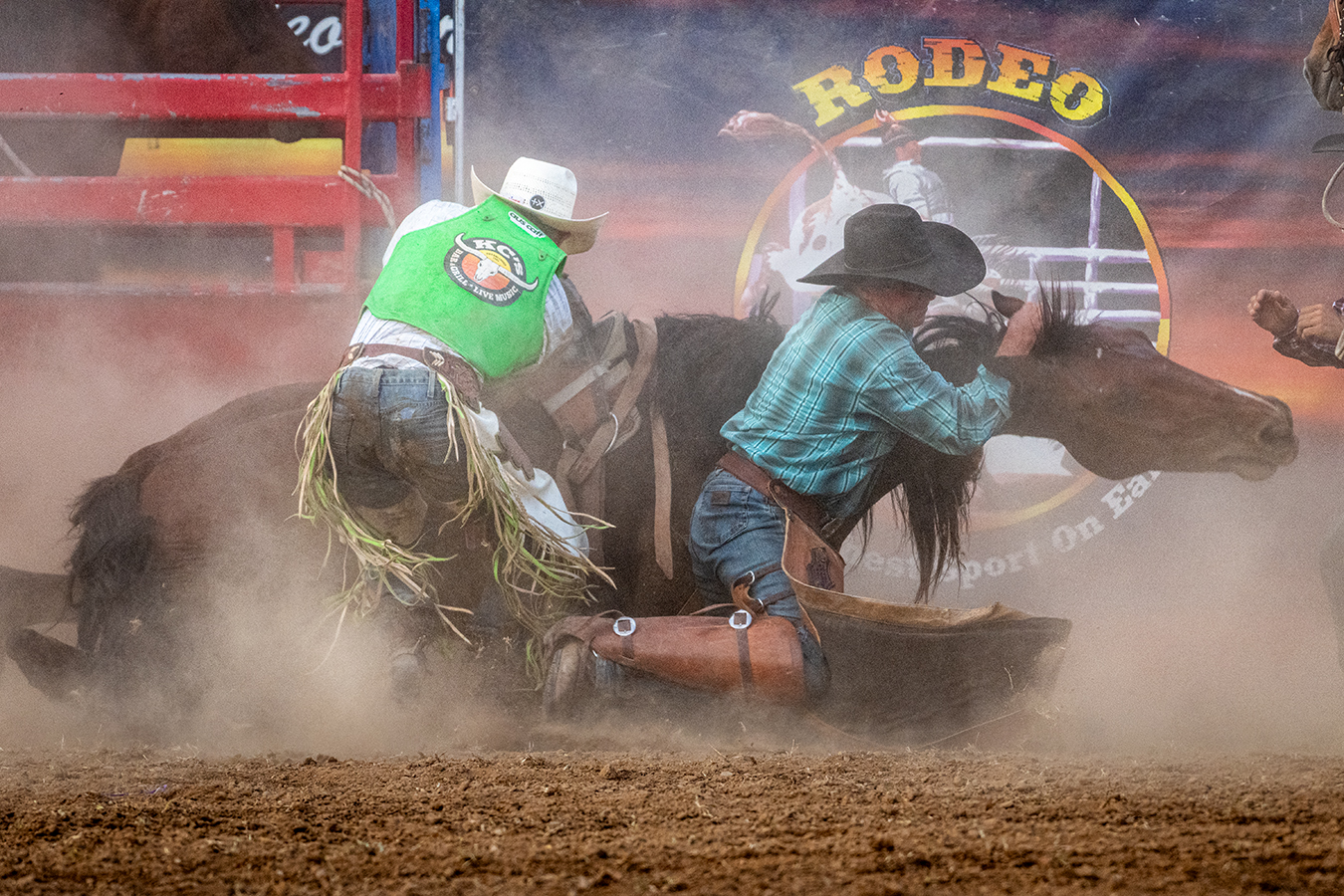
THROWN, 2024
In bronc riding, riders try to stay mounted on a bucking horse while maintaining control, but falls and entanglements are common. This image shows a pickup rider restraining the horse after a fall, highlighting the physical dangers faced by both horse and rider.
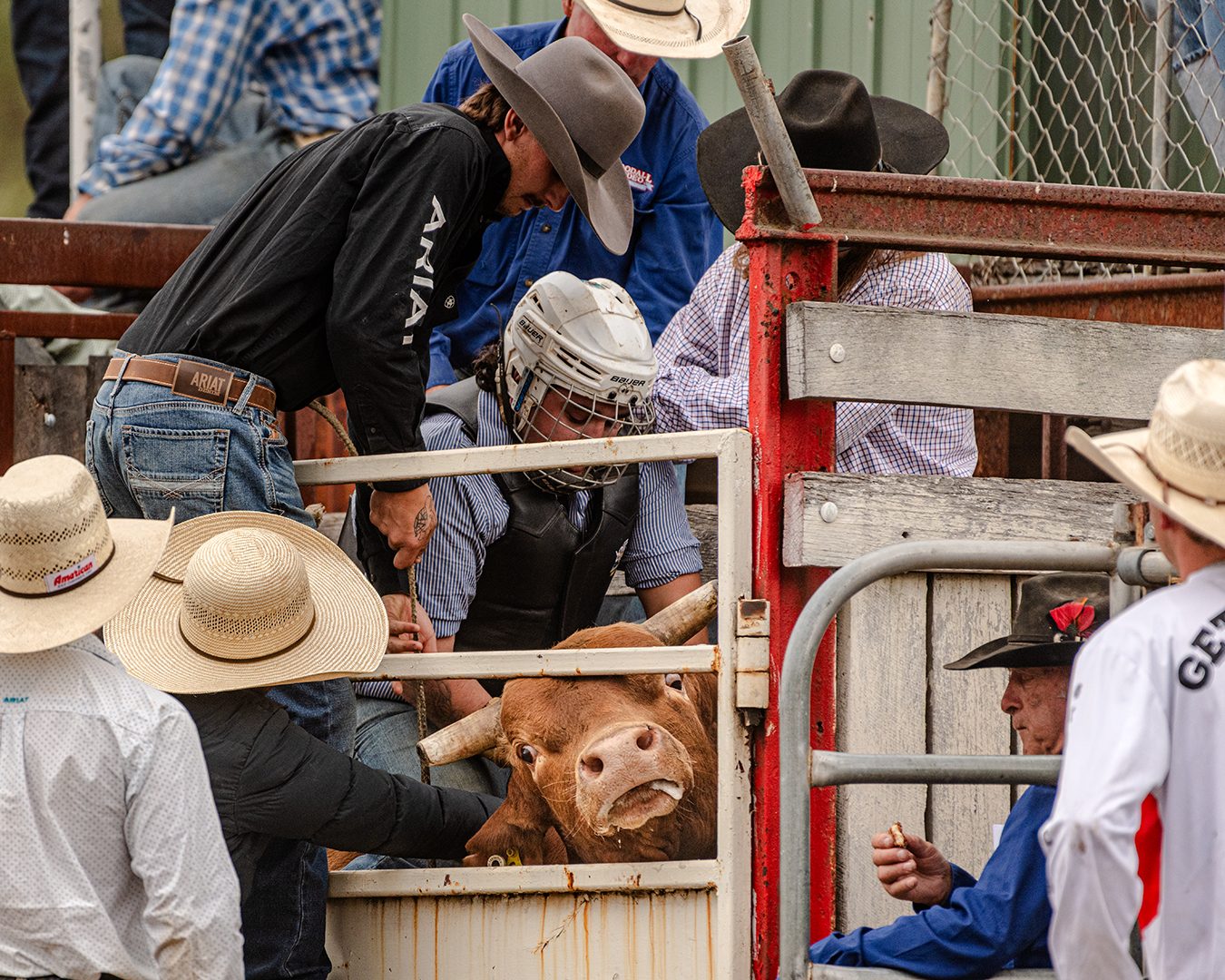
HELD, 2025
As the cowboy prepares to mount, the bull peers nervously from the chute, already showing signs of distress. Rough handling, tight flank straps, and intense stimuli contribute to the bull’s fear, which increases the risk of injury for both animal and rider.
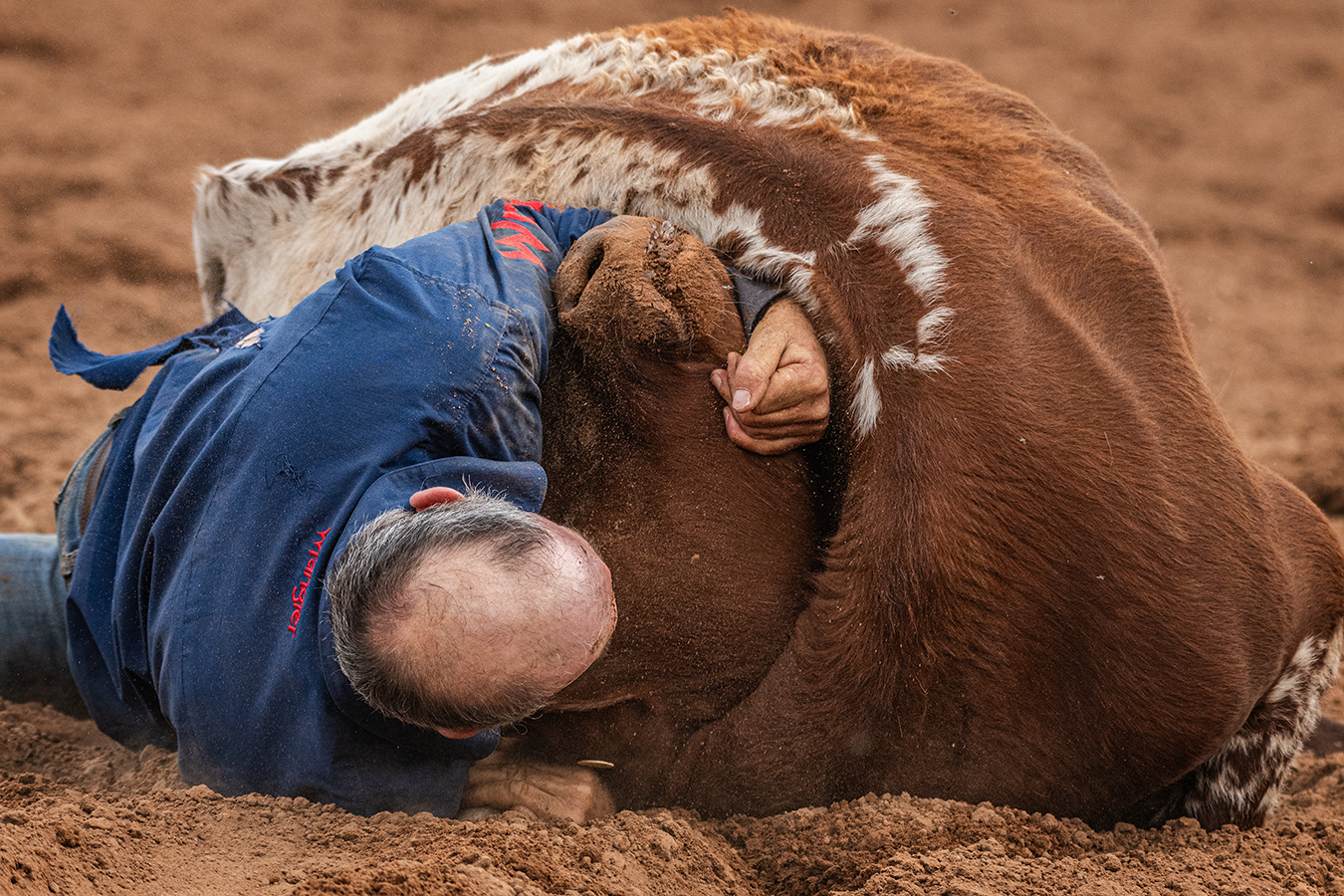
LOOPED, 2024
The cowboy wrestles the steer to the ground after several attempts during a rough contest. The animal endures forceful twisting and jerking, which can lead to neck strains, broken horns, and other serious injuries like fractured bones or torn ligaments.

SNAPPED, 2025
During a bronc riding event, a bucking horse falls headfirst with the rider crushed beneath. Such events often cause leg, back, and joint injuries to horses, and repeated use combined with stress heightens the risk of long-term harm.
